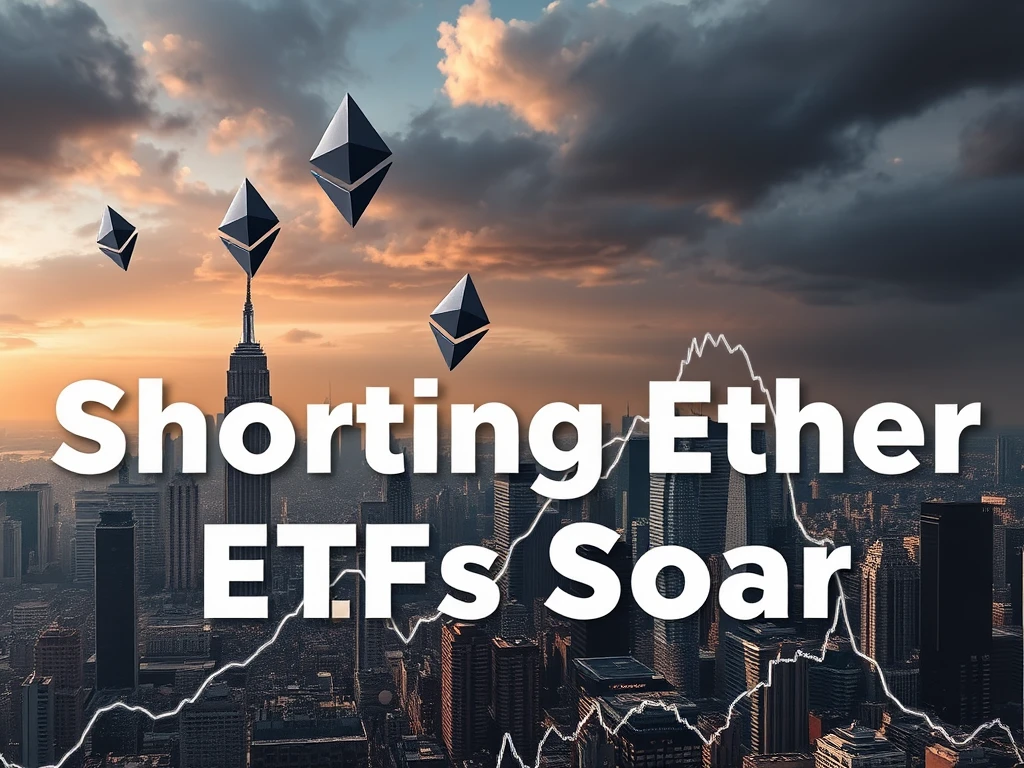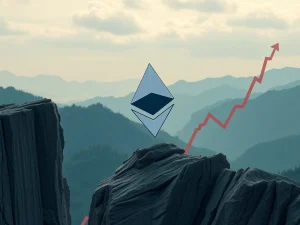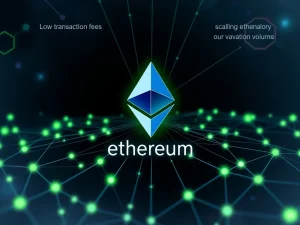Shocking 2025 Crypto Strategy: Shorting Ether ETFs Yield Brutal Returns

In the ever-turbulent world of cryptocurrency, unexpected strategies often rise to the top. Buckle up, because 2025’s most surprising ETF success story isn’t about riding the crypto wave up – it’s about betting against it! Yes, you heard right. This year, the king of the crypto ETF hill is none other than shorting Ether ETFs. Let’s dive into this fascinating, and perhaps a little unsettling, trend.
Why is Shorting Ether ETF the Top Strategy in 2025?
According to Bloomberg Intelligence analysts, the top spot for ETF performance in 2025 is claimed by strategies designed to profit from a decline in Ether’s price. Specifically, two leveraged ETF performance products, ProShares UltraShort Ether ETF (ETHD) and T Rex 2X Inverse Ether Daily Target ETF (ETQ), have skyrocketed to the top of the charts. These aren’t your typical ‘buy and hold’ crypto funds; they are designed to deliver twice the inverse of Ether’s daily returns.
Think of it this way: if Ether drops by 1%, these ETFs aim to rise by 2%. And rise they have! ETHD is up a staggering 247%, while ETQ has climbed about 219% year-to-date, according to Bloomberg Intelligence data. This incredible performance highlights a significant shift in market sentiment and strategy.
What Fuels the Surge in Leveraged ETF Performance for Shorting Ether?
The answer, in short, is Ether’s price performance itself. As of April 11, Ether had plummeted approximately 54% year-to-date. This sharp decline is the rocket fuel behind the soaring returns of these shorting Ether ETFs. These ETFs utilize financial derivatives to mirror the inverse of Ether’s movements, but with double the oomph.
However, it’s crucial to remember a key point about leveraged ETF performance: they aren’t perfect mirrors. They are designed for daily targets and may not track perfectly over longer periods. Nonetheless, their 2025 performance speaks volumes about the current market dynamics surrounding Ethereum.
Ethereum’s Dencun Upgrade: Did it Backfire?
Ethereum, despite holding a dominant position with around $46 billion in total value locked (TVL), has faced revenue challenges. The much-anticipated Dencun upgrade in March 2024, intended to slash costs for users, inadvertently triggered a dramatic drop – around 95% – in network fee revenues.
This revenue slump is largely attributed to the difficulties in monetizing layer-2 (L2) scaling solutions. While L2s like Arbitrum and Base are handling an increasing chunk of Ethereum transactions, the revenue generated isn’t flowing back to the main Ethereum network in a way that compensates for the fee reduction.
Can Ethereum Recover Its Lost Revenue?
The path to recovery for Ethereum’s fee revenue is steep. Consider this: in a week ending in March 2025, Ethereum earned a mere 3.18 ETH from L2 transactions. To reach pre-Dencun revenue peaks, L2 transaction volumes would need an astronomical 22,000-fold increase, according to DeFi Report founder Michael Nadeau.
Here’s a quick breakdown of the revenue challenge:
| Factor | Impact on Ethereum Revenue |
|---|---|
| Dencun Upgrade | Intended to reduce user fees; drastically cut network revenue. |
| Layer-2 Scaling | Shifts transaction volume to L2s; monetization challenges persist. |
| Transaction Volume | L2 volume needs massive surge for revenue recovery. |
This revenue struggle, coupled with broader market sentiment, contributes to the bearish outlook reflected in the success of Ethereum ETF strategy focused on shorting.
Are Broader Market Concerns Contributing to Ether’s Price Drop?
Yes, the diminished activity in smart contract platforms like Ethereum and Solana during the first quarter of 2025 isn’t solely an Ethereum-specific issue. VanEck’s April report points to a cooling market sentiment across the board. Traders are bracing for potential economic headwinds, including US President Donald Trump’s proposed tariffs and the specter of a looming trade war. These macroeconomic factors add pressure to the crypto market, further impacting assets like Ether and boosting the appeal of Ether price prediction strategies that lean bearish.
Looking Ahead: What’s Next for Ethereum and Crypto ETFs?
Ethereum’s future hinges on its ability to evolve as a data availability engine for L2s and find effective ways to monetize its ecosystem in this new landscape. The performance of Crypto ETF 2025, particularly those shorting Ether, serves as a stark reminder of the market’s current anxieties and the potential for profit in downturns.
While shorting Ether ETF strategies are currently in the spotlight, the crypto market is notoriously dynamic. The long-term implications of Ethereum’s revenue model shift and the broader economic climate will ultimately shape the future trajectory of Ether and the performance of both bullish and bearish crypto investment vehicles.
Key Takeaways on the Shocking Rise of Shorting Ether ETFs:
- Top ETF Strategy: In 2025, shorting Ether via leveraged ETFs is outperforming traditional crypto ETF strategies.
- Brutal Ether Performance: Ether’s significant price drop year-to-date fuels the returns of inverse ETFs.
- Dencun Impact: Ethereum’s upgrade, while user-friendly, slashed network revenues, impacting token performance.
- L2 Monetization Challenge: Ethereum needs to effectively monetize Layer-2 scaling solutions to recover revenue.
- Market Sentiment: Broader economic concerns and trade war anxieties contribute to bearish crypto sentiment.
In conclusion, the surprising dominance of shorting Ether ETF strategies in 2025 underscores the volatile and unpredictable nature of the cryptocurrency market. It’s a powerful reminder that in crypto, as in traditional finance, innovative strategies can emerge from unexpected corners, even in – or perhaps especially in – times of market stress.










